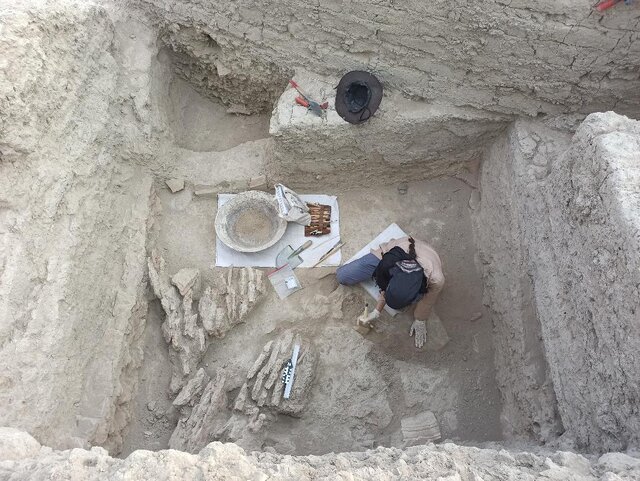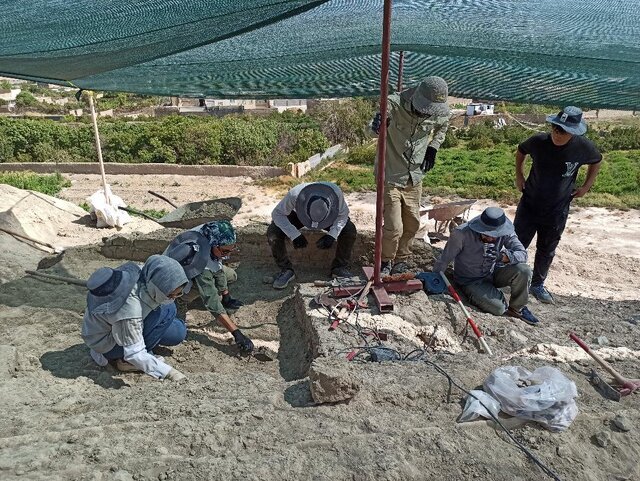Prehistorical water system uncovered at legendry Sialk Hills

TEHRAN — An archaeological team has uncovered a prehistorical water system during excavations in Sialk Hills, located near Kashan, central Iran.
The team co-led by Iranian archaeologists Jebrael Nokandeh and Javad Hosseinzadeh recently found an earthen waterway during its second survey conducted on legendry Tepe Sialk (aka Sialk Hills), whose oldest settlements are estimated to date to around 6000–5500 BC. The Sialk ziggurat was built around 3000 BC.
Initial estimates suggest the earthen waterway may belong to the latest settlements established at the site, ISNA reported on Saturday.

Authorized by the Research Institute of Cultural Heritage and Tourism, the current archaeological dig is aimed to discover more clues about the Sialk Hills during the fifth and sixth periods (which marks the last settlement stages) and find reasons for the abandonment of the site, the report said.
“Despite extensive explorations in the last century, researchers' information about that period (of the Sialk Hills) is still insignificant and incomplete,” Nokandeh said.
Experts believe that Sialk is a treasure trove of information about diverse subjects such as paleobotany, palaeozoology, palaeoanatomy, diet, climate change, and ancient metallurgy.
Situated halfway between Kashan and Fin in Isfahan province, Tapeh Sialk (“Sialk Hills”) has yielded interesting pottery pieces, metal tools, and domestic implements made from stone, clay, and bone that date from as early as the 4th millennium BC.
In 2019, the Louvre museum hosted a worldwide gathering on Tapeh Sialk (“Sialk hills”), which was attended by archaeologists from Germany, England, France, and Iran. According to the Louvre, the event was aimed to cast a new light on the ancient site some 80 years after its first excavation to lay an opportunity to present to the public the diversity of research and projects, as well as current issues of preservation and enhancement of the site.
As per the Louver, the oldest levels document the occupation of the Iranian plateau from the Neolithic to the Chalcolithic over more than two millennia. Then, around 3000 BC, the site was integrated into the vast cultural area called Proto-Elamite, during which specific writing appeared.
Afterward, during the Iron Age, the neighborhood culture, addressed by perfectly painted ceramics, was most popular through the uncovering of necropolises. This culture, which appeared new in the region, has long been identified with the Medes and fueled the debate over the arrival of new populations speaking Iranian languages from which comes modern Persian.
A few exhuming projects at the site have so far been directed, beginning with a 1933 French Louvre delegation led by Roman Ghirshman; capping with a most recent project in 2009, which was led by Hassan Fazeli-Nashli, a faculty member of the Archaeology Department, University of Tehran.
AFM
Leave a Comment